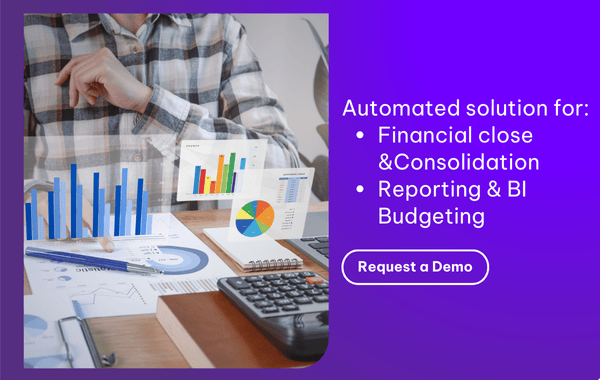In a global survey conducted by KPMG1 in 2016, over two-thirds of respondents, who are all senior executives, said they have some forms of rolling forecast in place. In order to thrive in this VUCA world, accurate forecasting seems more imperative than ever. Rolling forecasting, as a means to achieve that, is now a universal practice thanks to its proven capabilities.
Given this increasing adoption rate, should you too give up the regimented method of fixed forecasting and opt for the much more rigorous rolling forecasting?
In what follows, we will highlight the nature of both fixed and rolling forecasting: their differences as well as their pros and cons. Having a firm grasp on these main points, you would have the basis for choosing the best forecasting approach that drives values and maximises profitability.
Read more: Budgeting tips for businesses

Fixed forecasting vs. Rolling forecasting: what are they?
Fixed or rolling, they are all financial practices to achieve a single objective: allocating financial resources into anticipated expenses, be it headcount, administrative and operating expenses, or marketing, for a predetermined timeframe.
That being said, these two practices have a number of radical differences that are worth writing home about:
What is fixed forecasting?
Fixed forecasting is a process of drawing up a fixed budget for a fixed period of time, typically as lengthy as one fiscal year. Once it is published, this budget remains unmodified despite unanticipated market fluctuations, windfalls or shortfalls that could take place along the line.
One might say that this static practice of forecasting takes a count-down approach as the instant after it is released, a fixed budget just sits idly by until it is discarded and replaced by a new one at the end of the fiscal year or of the forecast period.
For example, suppose that your organisation adopts fixed forecasting as an established practice and at the beginning of this forecast period, it sets a budget of 1 million. You should assume that this number would stay the same even if sales skyrockets to tens of millions or if the company goes that same amount into the red.
A fixed forecast usually takes no less than 4 months to finalise. Alas, as it fails to reflect in real-time the organisation’s situation and the overall market, people deem fixed forecasting a futile effort and oftentimes let it slip through the crack.
In its defence, fixed forecast, compared to rolling forecast, cuts a huge amount of time and manpower that need to devote to the forecasting process.
What is rolling forecasting?
Rolling forecasting, in contrast, is a much more dynamic approach and more suitable for the turbulent and unforeseen environments that organisations increasingly find themselves in.
By perpetually budgeting and re-budgeting the future expenses at regular and brief intervals, a rolling forecast could be tweaked and fine-tuned to accommodate market fluctuation, shortfalls, and windfalls that occur unexpectedly.
Suffice it to say that rolling forecast favours the add/drop approach to budgeting, suggesting that it continuously "adds" a new forecast period once the previous one was "dropped". When properly implemented, a rolling forecast should be an ongoing and open-ended process.
For the sake of clarity, let's say your organisation sets a 12-month period for rolling forecast. This means that a new projection for the upcoming 12 months would be continuously added to the forecast as a replacement for the previous one at established intervals, which could be varied from monthly to quarterly depending on your business's needs and model.
Benefits or rolling forecast
A rolling forecast helps the organisation:
- Stay ahead of the curve: This is self-explanatory. Perpetually feeding a vast amount of financial and market data into the system makes rolling forecast a multi-purpose tool as it enables organisations to identify and respond quickly to changes, threats, and opportunities. Staying on top of all that, edging out competitors is within reach.
- Drive performance: as rolling forecast revolves around updating the financial needs of the organisation, it thus yields relevant and fresh insights as to the internal environment and the external market, closely aligning it with the strategic goals and objectives of the organisation. Having access to this source of actionable information, top dogs are allowed to fine-tune not only the financial plan but the overall strategy as well.
- Mitigate risk: also by continuously projecting future use of financial resources, rolling forecasting supports scenario planning or what-if scenario analysis, which in turn helps the decision-makers to proactively measure and minimise their exposure to risk.
- Stay relevant: rolling forecast is a driver-based approach, implying that rather than focusing on historical data that is often irrelevant and unnecessary to forecast like the conventional method; rolling forecasting centres on the "drivers" that could affect current and future performance such as category growth, market share, human capital and the like. This capability, apart from drastically cutting costs and time required, helps organisations efficiently allocate scarce resources to address upfront those key driving forces, creating a budget that is consistent with business objectives and that could drive values.
That being said, rolling forecast is an onerous burden. Employing rolling forecast compels the organisation to deploy a huge volume of manpower and resources to make the system tick.
Read more: [Infographic] How CFOs can help improve sales forecasting
Fixed forecasting and rolling forecasting: which is better?
More than usual, people waver in their view as to the best approach to financial forecasting, perpetuating an unresolved conflict between members of the Board and the Finance functions.
We posit that there is no such thing as a comprehensive practice of forecasting. Sure enough, it is tempting to say that rolling forecast is far superior in many aspects but it does not mean that your organisation could not benefit from a fixed forecast or that you should adopt rolling forecast merely because “everybody is doing it”.
Consider your business' model and needs when choosing a forecasting method
As every organisation is distinct in the way they operate and spend money, a forecasting practice is only “the best” when it is the best fit for your business model and when it could accommodate the external influencing factors, which are the 2 determinants that need to be considered before adopting any sort of strategic tool, not just rolling forecast.
You should opt for a fixed forecast if your business operates in a stable market characterised by steady cash flow and insignificant changes. Blindly following the "rolling forecast" trend without consulting the aforementioned factors would suck out the time, money and resources, and bring about a budget that delivers little to no value.
However, in the current world where Volatility, Uncertainty, Complexity, and Ambiguity (VUCA) hold full sway, businesses regardless of size and scope all undergo disruptions to a lesser or greater extent. There is no shortage of instances in which organisations faced downfalls or even a total collapse due to failure to respond timely to contingencies and market fluctuations.
When should you go for rolling forecasting?
Rolling forecast is a must-have if you see that:
- Recent forecasts are wide of the mark
- Your business operates in a booming market that is sprinkled with unexpected contingencies, shortfalls, and windfalls
- Your business is either enjoying exponential growth or sustaining heavy losses
- The actual revenue and profit have shown an unpredictable pattern
- Your current forecasting approach is a nuisance or downright a futility that yields no value whatsoever
Overhauling the whole financial system with a rolling forecast, by all accounts, is no easy feat as it necessitates a mass-scale investment of every manner of resources. This thought intimidates people and accounts for why many organisations still refrain from adopting this practice.
Infor d/EPM is one of industry-wide accounting software in our solution portfolio. Tailored specifically to your need for financial management, Infor d/EPM helps your business to automate and mainstream the rolling forecast. Request a demo today.
Sources: Scott Parker, Head of Financial Management, "Forecasting with confidence", KPMG International, 2016.
 English
English  Vietnamese
Vietnamese 

